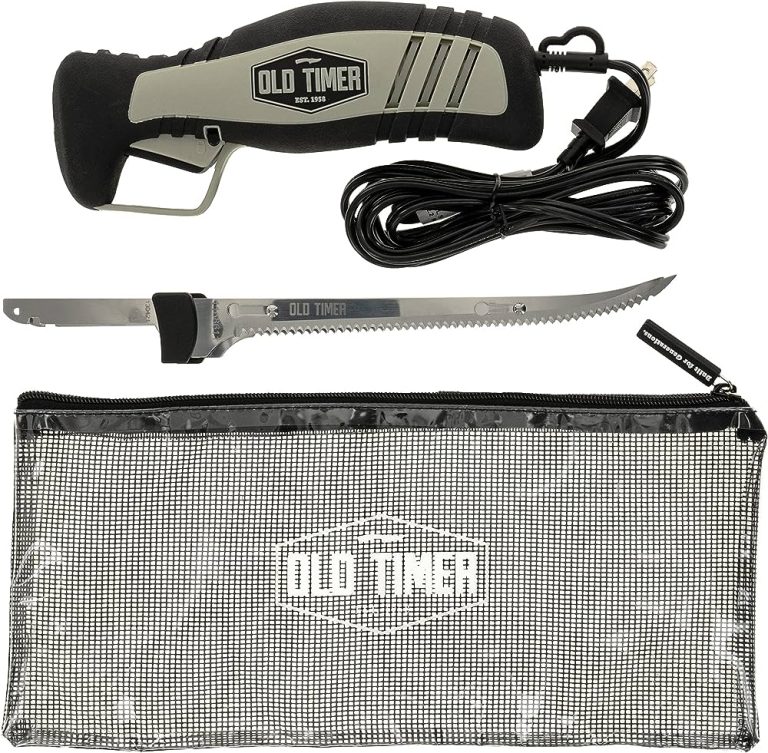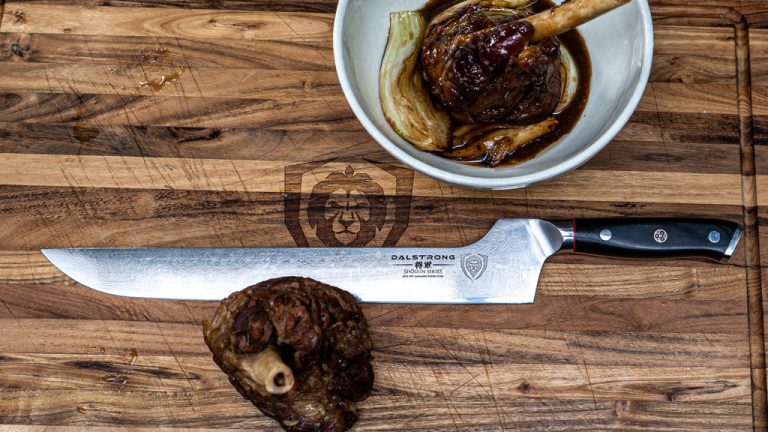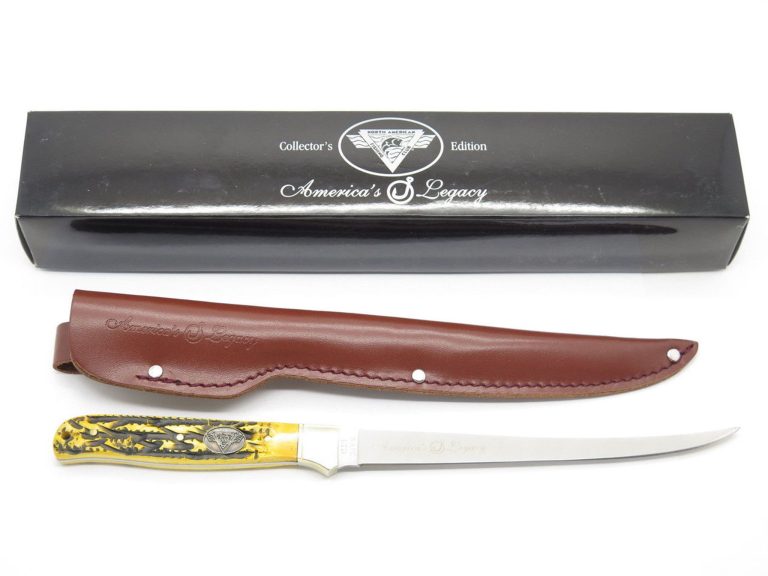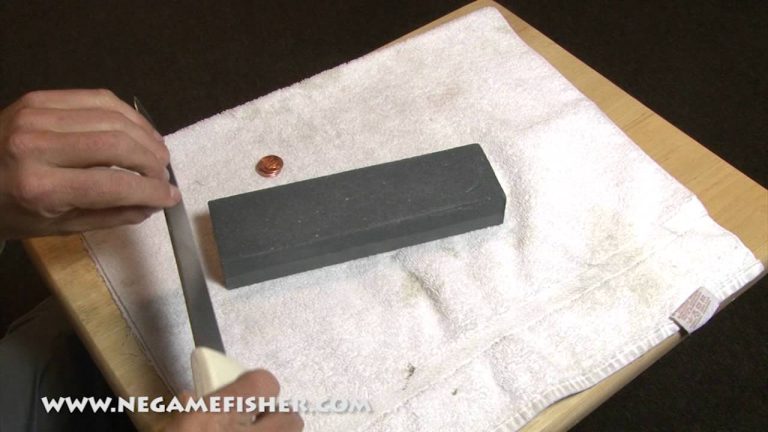How to Fix Knife
Fixing a knife can be done by sharpening the blade or replacing it altogether. Now I will give a well-rounded introduction to elaborate on this topic.
A knife is an essential tool in many households, used for various tasks such as cooking, cutting, and slicing. However, over time, knives can lose their sharpness, making them less efficient and potentially dangerous to use. Fortunately, there are a few simple ways to fix a knife and restore its functionality.
This article will provide you with practical tips on how to fix a knife by sharpening the blade or replacing it if necessary. Whether you are an avid cook or simply rely on a knife for everyday tasks, knowing how to properly maintain and fix your knife can prolong its lifespan and ensure safe and effective use. So let’s dive into the methods of fixing a knife and make it as good as new.
Identifying The Issue
Identifying the issue with your knife is the first step towards fixing it. Start by evaluating the knife’s condition to determine the extent of the problem. Examine the blade for any signs of damage, such as chips, dents, or corrosion. Pay attention to the sharpness of the blade as well. If it feels dull or doesn’t cut through food smoothly, it may need some sharpening. Assessing these factors will help you understand what specific issues you need to address when fixing your knife.
Determining The Fixing Method
Determining the Fixing Method
Understanding the type of knife is the first step in determining the appropriate fixing method. Different types of knives may require different approaches. Assessing the severity of damage is crucial in identifying the necessary repair techniques. Minor repairs may only require simple fixes, while more significant damages might involve professional intervention.
Considering the material composition is another important factor. Knives made of different materials, such as stainless steel, carbon steel, or ceramic, may require specific repair methods. The composition influences the tools and techniques utilized in the fixing process.
| Fixing Method | Knife Type | Severity of Damage | Material Composition |
|---|---|---|---|
| Sharpening | Various Knife Types | Minor Damage | Stainless Steel, Carbon Steel |
| Professional Repair | Specific Knife Types (e.g., Specialty Kitchen Knives) | Moderate to Severe Damage | Ceramic |
Applying The Knife Repair Techniques
Is your kitchen knife becoming dull and inefficient? Don’t worry, you can easily sharpen the dull blade and bring it back to its former glory. To start, gather a sharpening stone and lubricating oil. Hold the knife at a 20-degree angle and glide the blade along the stone, starting from the base and moving towards the tip. Repeat this process on the other side of the blade.
Now, let’s focus on repairing chips and nicks. For small nicks, use a sharpening stone to gently remove the damaged area. For larger repairs, you may need to reshape the blade using a coarse grit stone. Remember to maintain the same 20-degree angle.
Lastly, to restore the knife’s edge, use a fine grit stone to refine and polish the blade. This will give your knife a razor-sharp edge for smooth cutting. Once you’re done, wipe off any excess oil and your knife is ready to use again!
Proper Knife Handling And Storage
Proper Knife Handling and Storage
When it comes to correct knife handling techniques, it is crucial to prioritize safety to avoid any accidents. Always hold the knife by the handle with a secure grip and ensure your fingers are away from the blade. A proper cutting technique involves using a rocking motion with the knife, using the entirety of the blade instead of applying excessive force.
Storing knives correctly is equally important to maintain their quality and prevent damage. Avoid storing knives loose in a drawer, as they can get blunt or even cause injuries. Instead, consider using a knife block or magnetic strip. Additionally, always make sure to clean and dry knives thoroughly before storing them.
To avoid damage during use, it is vital to use the right knife for the task at hand. Using a knife with a dull edge or applying excessive force can lead to accidents. Moreover, regular honing and sharpening of knives are essential to keep them in optimal condition.
Regular Maintenance And Cleaning
Regular maintenance and cleaning are essential for keeping your knife in top condition. Cleaning the knife blade properly is the first step in this process. To do this, use a mild soap and warm water to gently clean the blade, making sure to remove any dirt or residue. **Avoid using harsh chemicals** as they can damage the blade’s finish.
Once the blade is clean, it’s important to oil and lubricate it regularly. This helps to prevent rust and keeps the knife functioning smoothly. **Apply a small amount of food-grade mineral oil** to the blade, using a clean cloth or cotton swab. Spread the oil evenly and make sure to cover the entire surface.
In addition to cleaning and oiling, it’s crucial to regularly inspect the knife for any issues. Look for signs of wear or damage, such as **loose or wobbly handles**, **nicks or chips in the blade**, or **corrosion**. If any issues are found, take the necessary steps to address them, whether it’s tightening screws, sharpening the blade, or seeking professional help.
Professional Knife Maintenance Services
Professional Knife Maintenance Services
When your knife starts to lose its sharpness and effectiveness, it’s time to consider professional knife maintenance services. Bringing your knife to a reliable repair service can offer a range of benefits.
- Enhanced Performance: Professional maintenance can restore the sharpness and functionality of your knife, ensuring optimal performance in the kitchen or any other activity where a sharp blade is crucial.
- Prolonged Lifespan: Regular maintenance helps to extend the lifespan of your knife. By addressing any issues, such as loose handles or dull blades, professionals can prevent further damage and keep your knife in top condition for longer.
- Preservation of Value: Investing in professional maintenance helps to preserve the value of your knife. A well-maintained knife retains its quality and can be a valuable asset for years to come.
To ensure your knife receives the best care possible, it’s essential to choose a reliable knife repair service. Look for experienced professionals who can handle different types of knives and offer scheduled maintenance recommendations. Regular care will help your knife stay sharp and reliable throughout its lifespan.
Choosing The Right Cutting Surface
How to Fix Knife
Selecting the Ideal Cutting Board Material
Cutting boards play a crucial role in maintaining the sharpness and longevity of your knives. It’s important to choose the right cutting surface to ensure efficient and safe cutting. When selecting a cutting board material, **avoid using glass, metal, and granite surfaces** as they can dull your knife quickly and even cause it to chip. Instead, opt for **non-slip mats** or cutting boards made of **wood**, **bamboo**, or **plastic** materials. These materials are knife-friendly, providing a softer surface that won’t damage your blades. Wooden cutting boards are particularly popular due to their natural antimicrobial properties. Additionally, make sure the cutting board has a **non-slip base** to prevent accidents during use. Remember, a good cutting surface is essential for maintaining the performance of your knives and ensuring precision in your cooking!
Honing And Sharpening Techniques
Understanding the Difference Between Honing and Sharpening:
When it comes to fixing your knife, it’s important to know the difference between honing and sharpening. Honing is the process of realigning the blade’s edge, while sharpening involves removing metal to create a new edge. Understanding the distinction between the two techniques is crucial for maintaining optimal knife performance.
Using Honing Stones Correctly:
Honing stones are an essential tool for keeping your knife in top shape. To use them effectively, start by soaking the stone in water for approximately 5 minutes. Then, hold the blade against the stone at a 20-degree angle and apply light pressure as you glide the blade back and forth across the stone. Repeat the process several times on each side of the blade to achieve the desired honed edge.
Sharpening Methods for Various Blades:
Various blade types require different sharpening methods. For straight-edged blades, consider using a sharpening stone or a honing guide. Serrated blades, on the other hand, should be sharpened using a specially designed serrated knife sharpener. Additionally, ceramic blades require diamond sharpening stones or diamond files. By using the appropriate sharpening method for your specific blade, you can restore its sharpness effectively.
Utilizing Correct Knife Techniques
Proper knife techniques are essential for efficient and safe food preparation. Mastering the correct knife grip and positioning is the first step to becoming a skilled chef. Ensure a firm yet comfortable grip on the handle, allowing for precise control and reducing the risk of slippage. Position your hand correctly by tucking your fingers in and keeping your thumb in a secure position on the blade’s side.
Applying the correct cutting motion is equally important. Utilize a smooth, fluid action and let the sharp blade do the work, rather than exerting excessive force. For slicing, use a back-and-forth motion while maintaining a consistent angle and pressure. Chopping and dicing require an up-and-down rocking motion, pivoting on the knife’s tip.
Lastly, different foods require suitable knives. Select a fine-edged chef’s knife for overall kitchen tasks, while a serrated knife is ideal for slicing bread and delicate ingredients. For intricate cuts and precision work, a paring knife is the go-to choice. Sharpen your knives regularly to maintain their efficiency and ensure safe usage.

Credit: m.youtube.com
Conclusion
To conclude, repairing a knife can be a straightforward process if you follow the right steps. By assessing the issue and determining whether it’s a handle or blade problem, you can take the necessary measures to fix it. Remember to use the appropriate tools and technique for each repair, whether it’s tightening loose screws or sharpening a dull blade.
Regular maintenance, such as cleaning and oiling, will also extend the life of your knife. Additionally, investing in a quality knife from the start can prevent many issues. So, whether you’re an amateur chef or an outdoor enthusiast, with a little care and attention, your knife can serve you well for years to come.
Don’t let a minor problem hinder your culinary or outdoor adventures – grab your tools and get that knife back in action!






